Are you dreaming of a life surrounded by acres of pristine land, where you can build your own little haven? Montana, known for its rugged terrain and plenty of land, may just be the place for you.
This rugged state is known for its vast open spaces and abundance of land, making it a haven for those looking to homestead. But can you really homestead in Montana?
In this complete guide to Montana homesteading, I will unravel the mysteries of this unique lifestyle and show you how to make your homesteading dreams a reality.
Learn why you should care about living off the land, growing crops, and raising livestock in a country setting with this guide. If you’ve dreamt of this lifestyle, it’s tailored for you.
I will walk you through the process of finding and acquiring your own piece of paradise in Montana, from understanding the average price of land to navigating the homestead claims process.
- Related article: How Is Montana to Live in
So, whether you’re a city dweller yearning for wide-open spaces or a seasoned farmer looking to expand your horizons, this guide is tailor-made for you.
Montana Homesteading
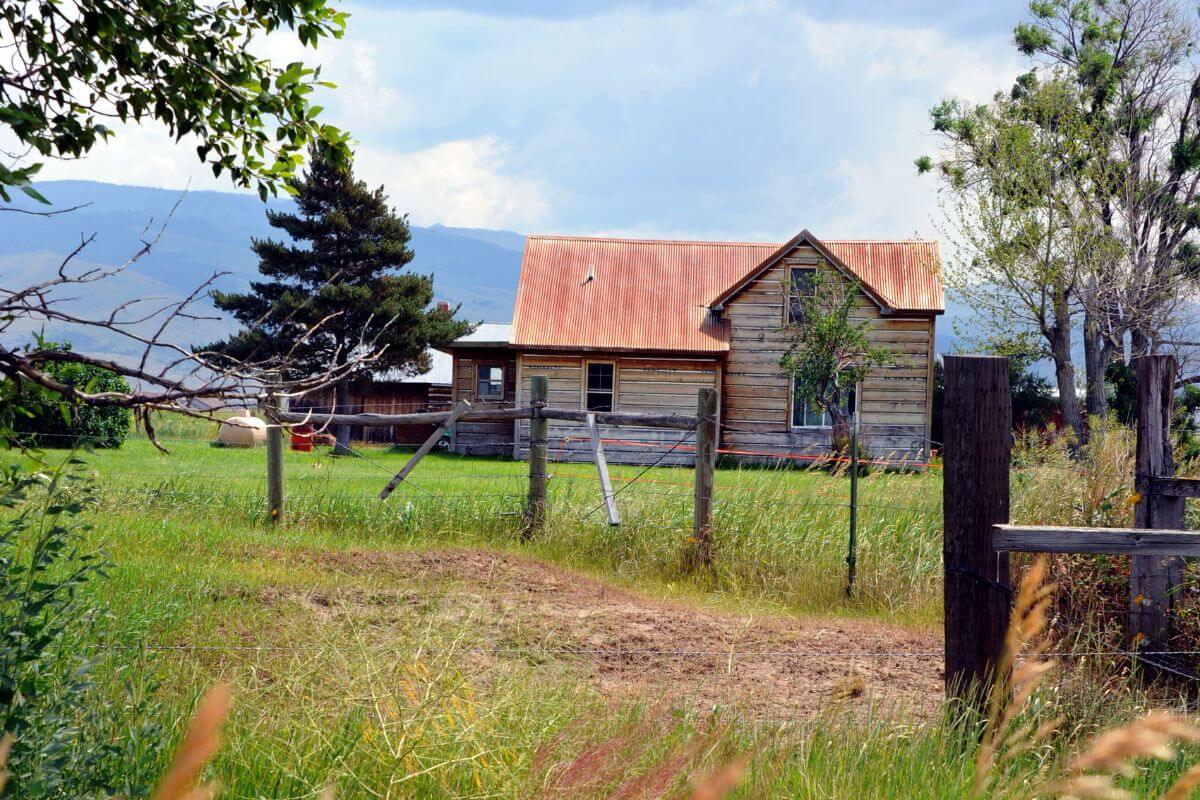
If you’ve ever imagined living a simpler and more self-sufficient lifestyle, then Montana might just be the perfect place for you to start your homesteading journey.
A large reason for Montana’s appeal comes from its off-the-grid lifestyle and peaceful atmosphere. One of the best ways to experience this is through homesteading.
In this section, we’ll answer some of the most common questions about homesteading in Montana, including its legality, living off-grid, and its popularity among aspiring homesteaders.
Is Montana Homesteading Legal?
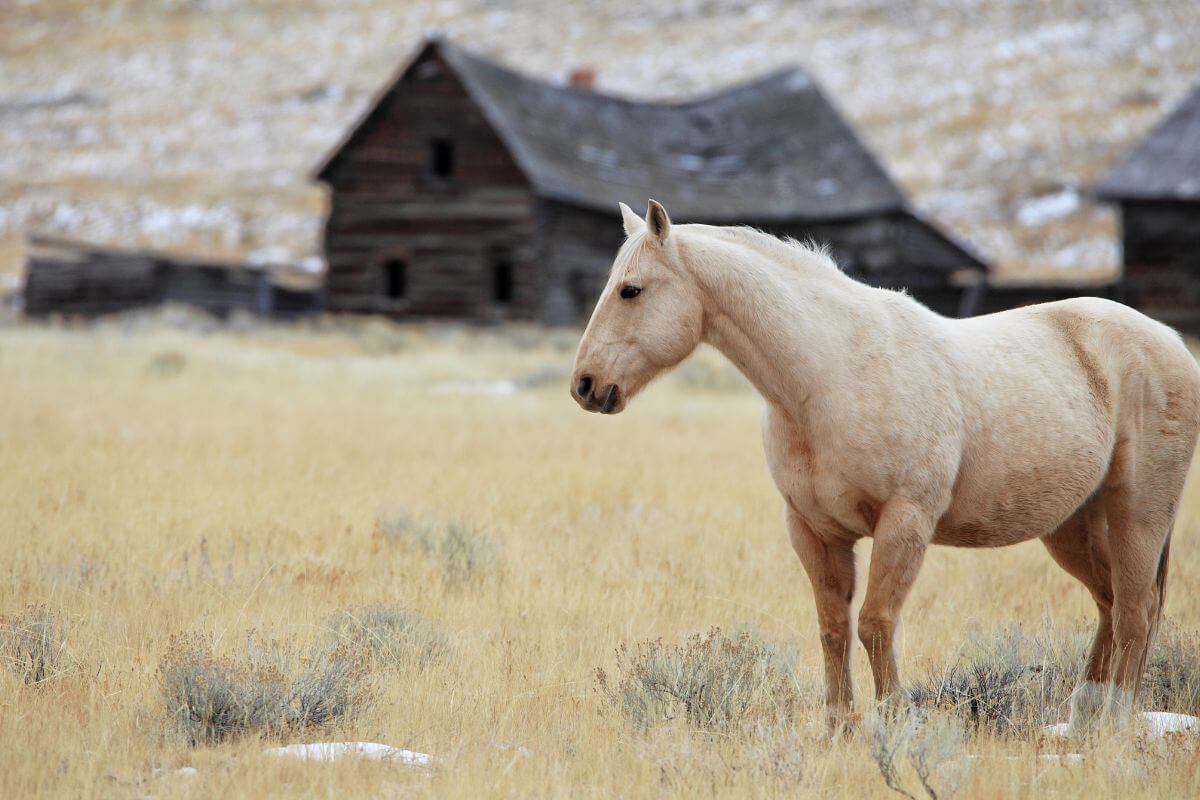
Homesteading played a key role in the settlement of the Great Plains by Euro-Americans, African-Americans, and immigrants.
On May 20, 1862, President Abraham Lincoln signed the Homestead Act, securing homesteads for actual settlers on public land. It’s legal to set up a homestead in Montana.
This foundational law was a green light for Americans to claim land, but naturally, it’s seen some updates and supplementary laws over the years. Montana has been hospitable to homesteaders.
Now, you can’t just claim any piece of land and call it your primary residence. To file for protection under the Montana Homestead Declaration, your property must genuinely be your home sweet home.
You can shield up to $378,560 in equity, but this isn’t just for the land, it also counts for any “improvements” you make, such as building a house, barn, or even that idyllic white picket fence.
Homestead declaration value limits over the years:
| Year | Homestead Declaration Value |
| 2022 | $364,000 |
| 2023 | $378,560 |
| 2024 | $393,702 |
These values increase by a solid 4% every calendar year. The maximum value of a filed Homestead Declaration is determined by the most recent county tax assessor’s valuation.
A Homestead Declaration is a legal document that helps safeguard your property, especially during economic hardships or in the event of the household head’s death protecting the surviving spouse a homestead allowance of $20,000.
The Montana Homestead Declaration form is readily available online for free. Just fill it out, file it, and you’re one step closer to that homesteading dream.
Can You Live Off-Grid in Montana?
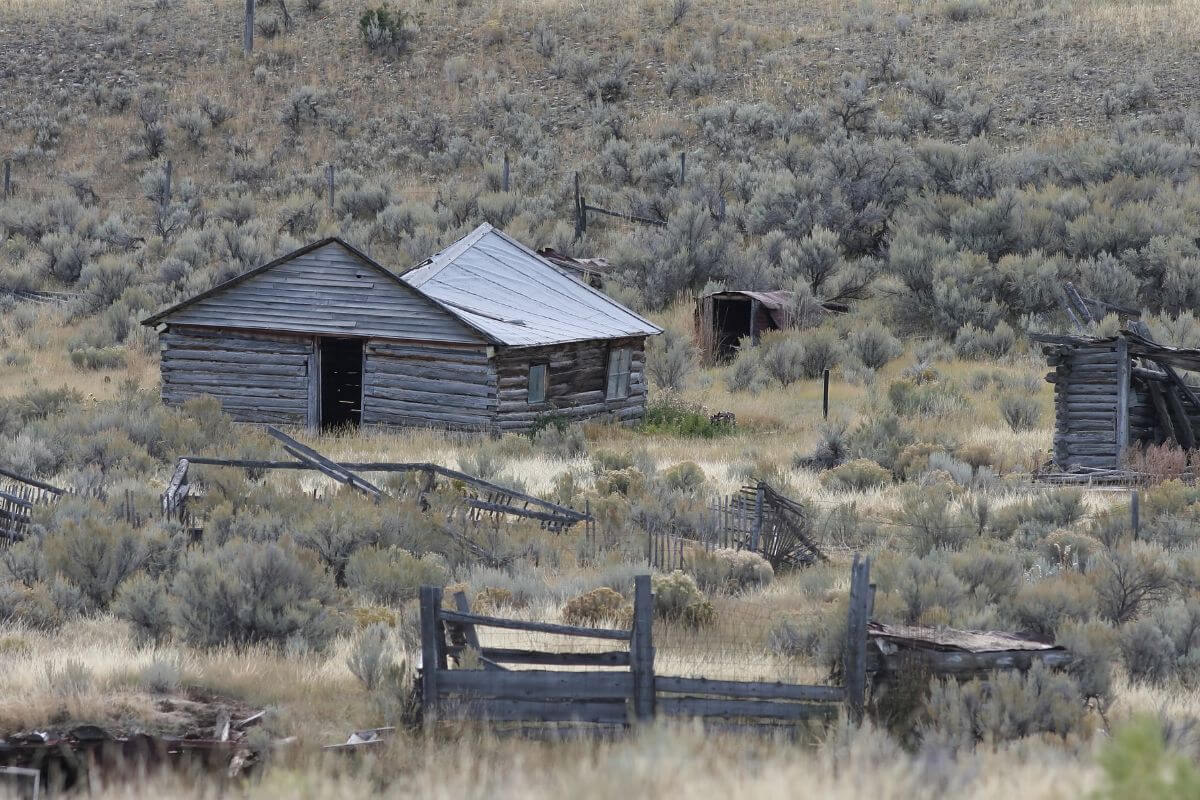
The good news, it’s entirely legal, and Montana is often hailed as an off-grid paradise.
Montana’s zoning laws are far more relaxed compared to most states, making it easier for those who want to live self-sufficiently.
As far as permits go to live off-grid in Montana, you’ll need to file the usual suspects, building permits, well permits, and septic permits. Here’s an overview:
- Building Permits – Required for all structures. Consult your local building department.
- Well Permits – Required for drilling new water wells and managed by the Montana Department of Natural Resources and Conservation.
- Septic Permits – Managed by county health departments and required if you plan on installing a septic system.
While living off-grid can offer the ultimate freedom and a close-to-nature lifestyle, it also comes with challenges like extreme weather conditions and limited access to medical facilities.
Take the community of Darby, for example. They’ve created a sustainable living model, harnessing solar energy and making use of local resources.
It’s not just about cutting ties with the grid; it’s about being a part of a larger, sustainable ecosystem.
Is Homesteading in Montana Popular?
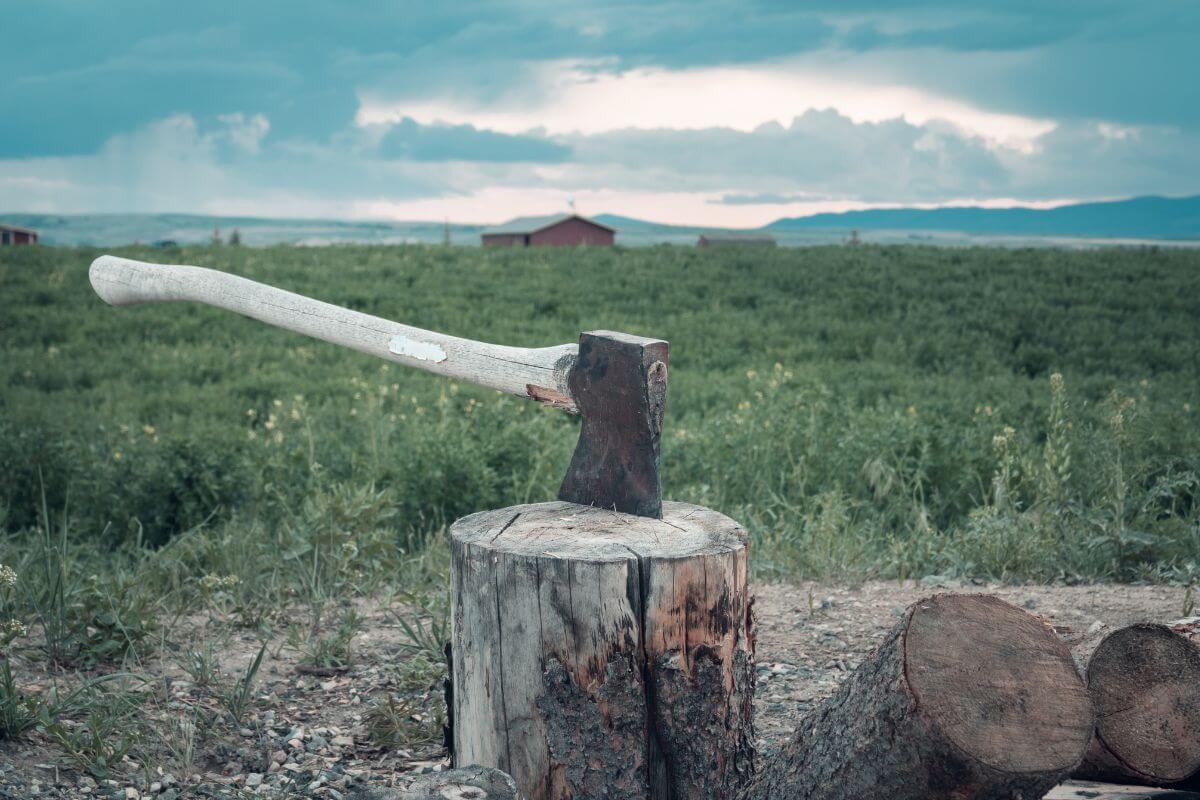
The state is like the VIP lounge of homesteading, spacious, welcoming, and as real as it gets. About 2% of people living in Montana are homesteading or living off-grid. This is high compared to other states.
Here are the reasons why Montana is a highly sought-after destination for homesteaders:
- Accessibility to Water – Ample water sources for irrigation and livestock.
- Safety – Low crime rates and a strong sense of community.
- Local Climate – Generous summers that are great for farming.
- Community Beliefs – Like-minded individuals valuing self-sufficiency.
- Price – Land and property taxes are relatively affordable.
Montana’s assets don’t just stop at the law and the lifestyle; it’s also about the land itself.
Summers are downright idyllic, perfectly complementing the state’s tranquil landscapes. All these factors collectively make Montana a magnet for aspiring homesteaders.
There are approximately 151,600 homesteads in Montana, sprawling over 32,050.48 acres of land. That’s a staggering 34% of all the land in the state devoted to this rustic lifestyle.
The Montana dream isn’t just a fantasy; for many, it’s a way of life.
How to Set Up a Homestead in Montana
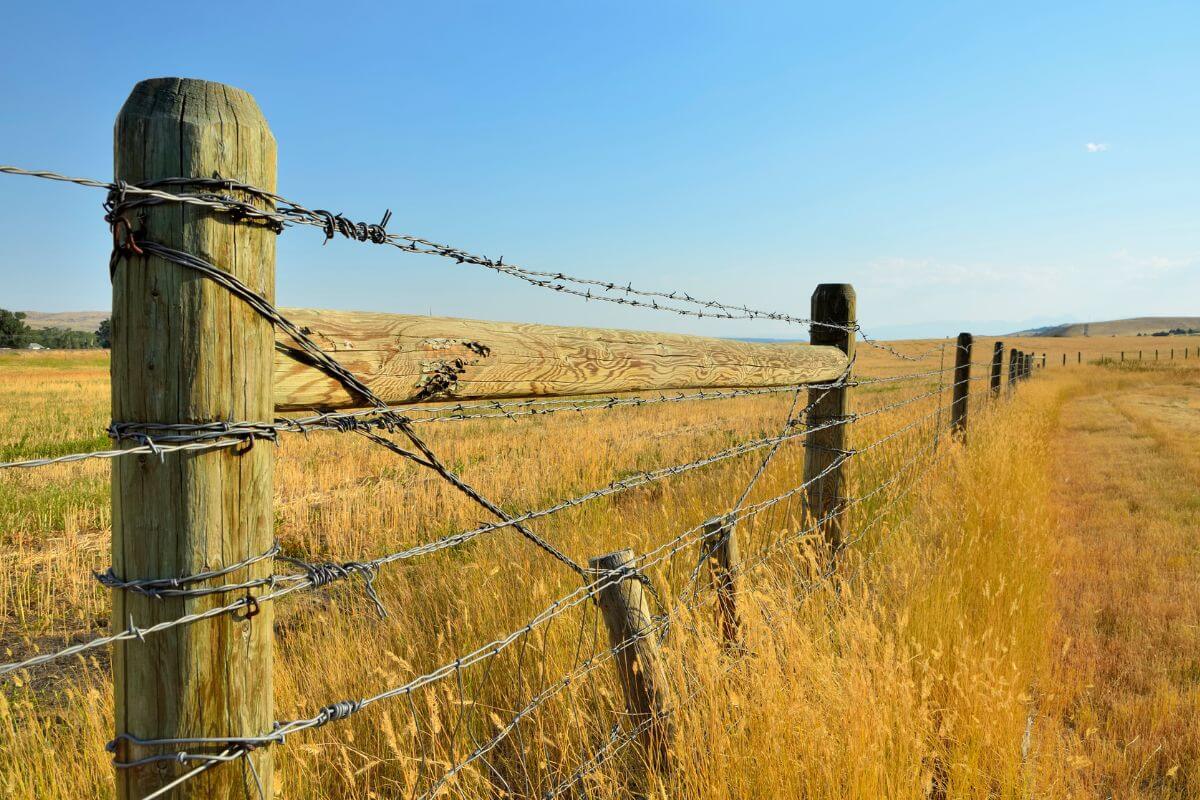
Once you’ve chosen Montana as your homesteading destination, setting up your homestead involves distinct phases such as growing crops, raising livestock, and kicking off your farming activities.
Montana’s agriculture is impressively dynamic, contributing around $3.5 billion to the market value of commodities as per the latest USDA Ag Census.
When it comes to growing crops in the Treasure State, greenhouse and nursery crops are dominant and contribute around $1.6 billion of the market value.
Keep in mind the type of soil, weather conditions, and other environmental factors that suit the crop you plan to grow in Montana. It’s also worth considering:
- Rotation Crops – wheat, barley, oat
- Pulse Crops – peas, lentils, chickpeas
- Specialty crops – sugar beets, safflower, mustard
If you’re keen on raising animals on your Montana homestead, you’ll find it a worthwhile endeavor.
Animal farming, involving cattle, poultry, and their products, contributes around $1.9 billion to the state’s market value. Possibilities range from:
- Livestock – cattle, bison, swine
- Poultry – chickens, turkeys, ducks
- Variety of fish – for aquaculture purposes
Starting a farm in Montana may seem daunting but remember that every new venture comes with its unique set of challenges.
It’s crucial to match your farming pursuits with your goals, resources, and the demands of the Montana market.
Growing Crops in Montana
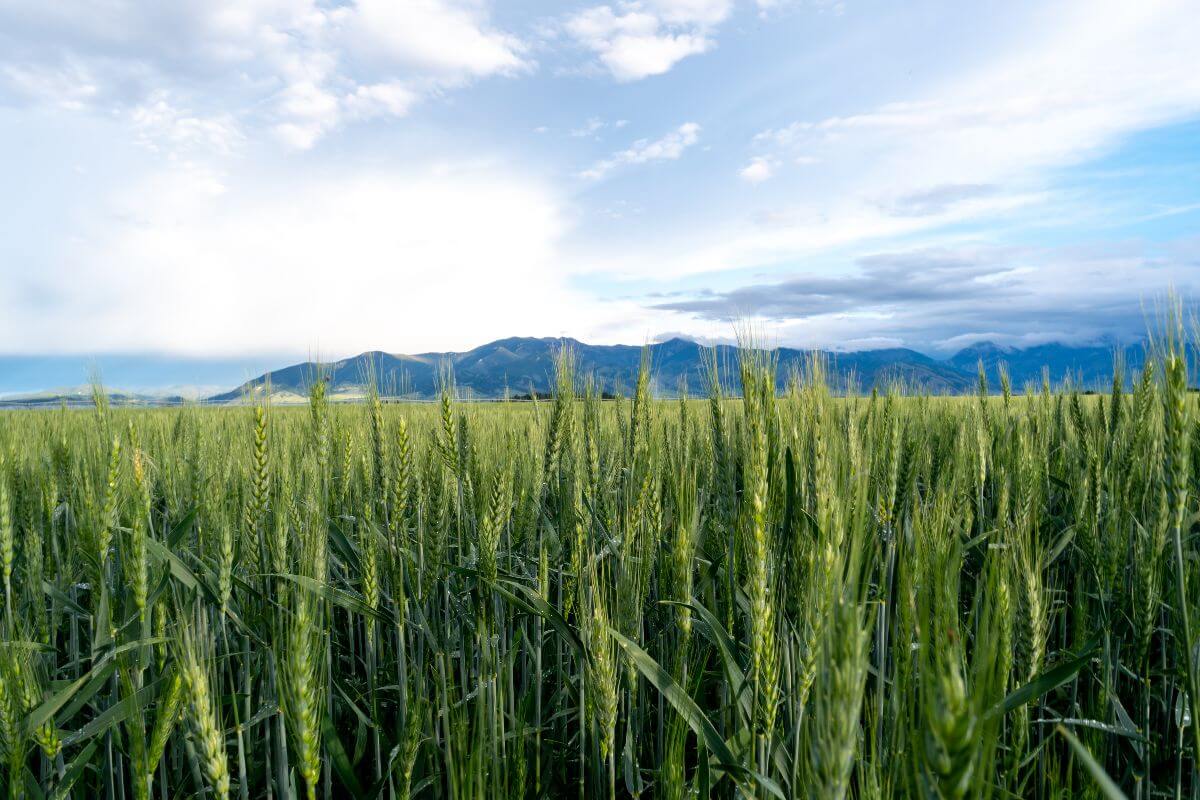
Montana is also a cornucopia of agricultural delights. Montana ranks 3rd in the U.S. for wheat exports. As a homesteader, this statistic isn’t just impressive; it’s a call to action.
Montana’s soil is rich, the seasons are generous, and the climate—falling mostly within USDA plant hardiness zones 3-6—is surprisingly accommodating for a variety of crops.
Here are some top crops you can grow, basking in Montana’s climate:
- Grains – Certified organic wheat, dry peas, lentils, flax
- Vegetables – Sweet corn, cabbage, beans, peppers, cucumbers, beets, carrots, tomatoes, pumpkins, squash, radishes
- Fruits – Sweet cherries
- Others – Honey and honey bees
Starting with staple grains like wheat or lentils is recommended. They’re not just top exports; they’re also easier to grow for beginners.
For vegetable enthusiasts, sweet corn and cabbage are practically fail-proof. And if you’re into the sweeter things in life, Montana’s climate is ideal for honey and honey bees.
You’d be surprised at the richness of Montana honey; it’s unlike any other.
Raising Animals in Montana
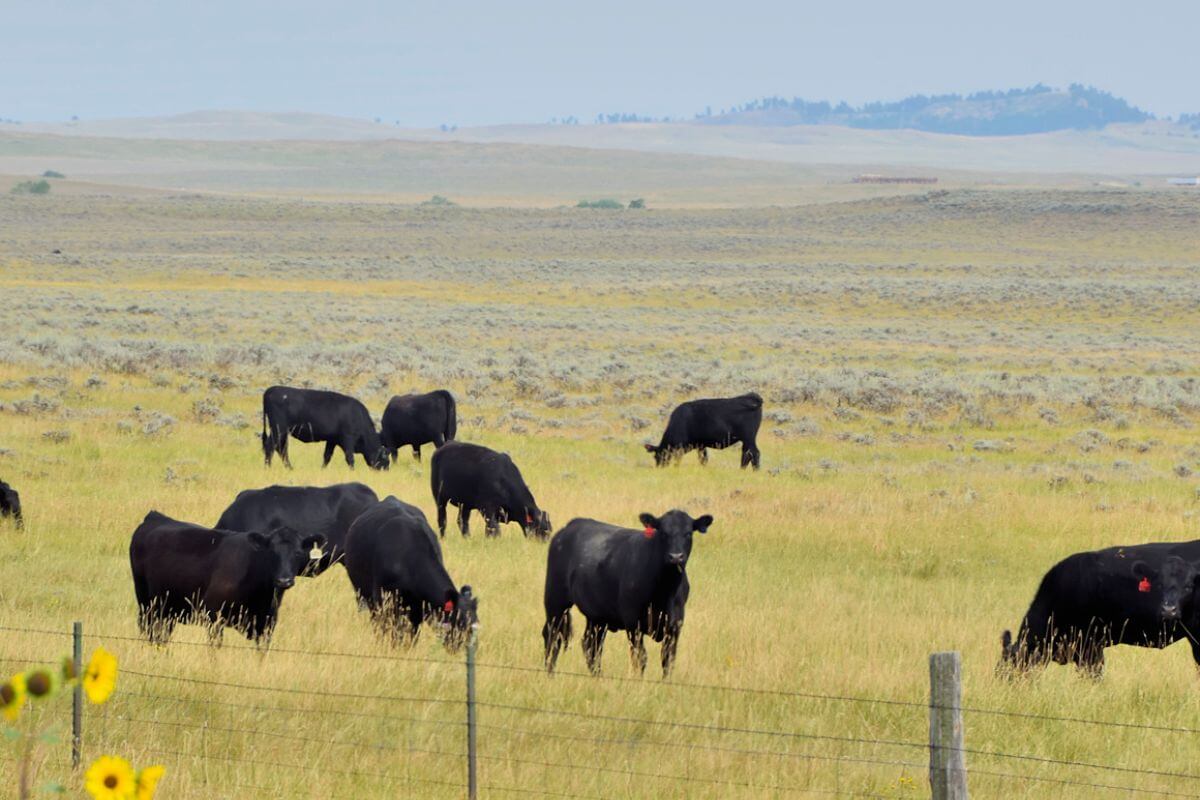
Did you know Montana is an open-range state? This means vast stretches of land are open to livestock grazing, regardless of who owns the property. Don’t worry, it’s not a free-for-all.
The Montana Department of Natural Resources and Conservation operates 27 grazing districts where you can let your livestock graze legally with a grazing permit.
Sustainable grazing management practices aren’t just buzzwords here; they’re a collaborative effort between state and federal agencies and Montana’s proud ranchers.
Here’s a quick snapshot of Montana’s preferred barnyard buddies:
- Cattle – Serving as the cornerstone of Montana’s livestock industry, contributing significantly to the state’s agricultural economy by providing meat and dairy products.
- Sheep – Valued not only for their wool but also as an integral part of Montana’s diverse livestock portfolio, playing essential roles in meat production and land management.
- Pigs – Highly regarded for their role in meeting the demand for pork and other meat products, making them a crucial asset for enthusiasts of bacon and pork-related culinary delights.
- Horses – Holding a revered status as the quintessential companions of Montana’s cowboys, they serve as partners in ranching, transportation, and various agricultural activities within the state.
Now let’s get down to logistics—fencing. Montana’s not the Wild West, and you can’t have your livestock playing a game of “Farmville: Wanderlust Edition” across the state.
In Montana, different types of fencing are used, from electric and wire to wooden and metal fences. Good fencing is the difference between a happy neighbor and a courtroom neighbor.
With its rich grazing lands, cooperative grazing permits, and a community that values sustainable management practices, Montana might just be the Eden your future cattle company has been seeking.
Just remember, it’s not just about the fences you build, but also the pastures you nurture.
Is It Hard to Start Farming in Montana?
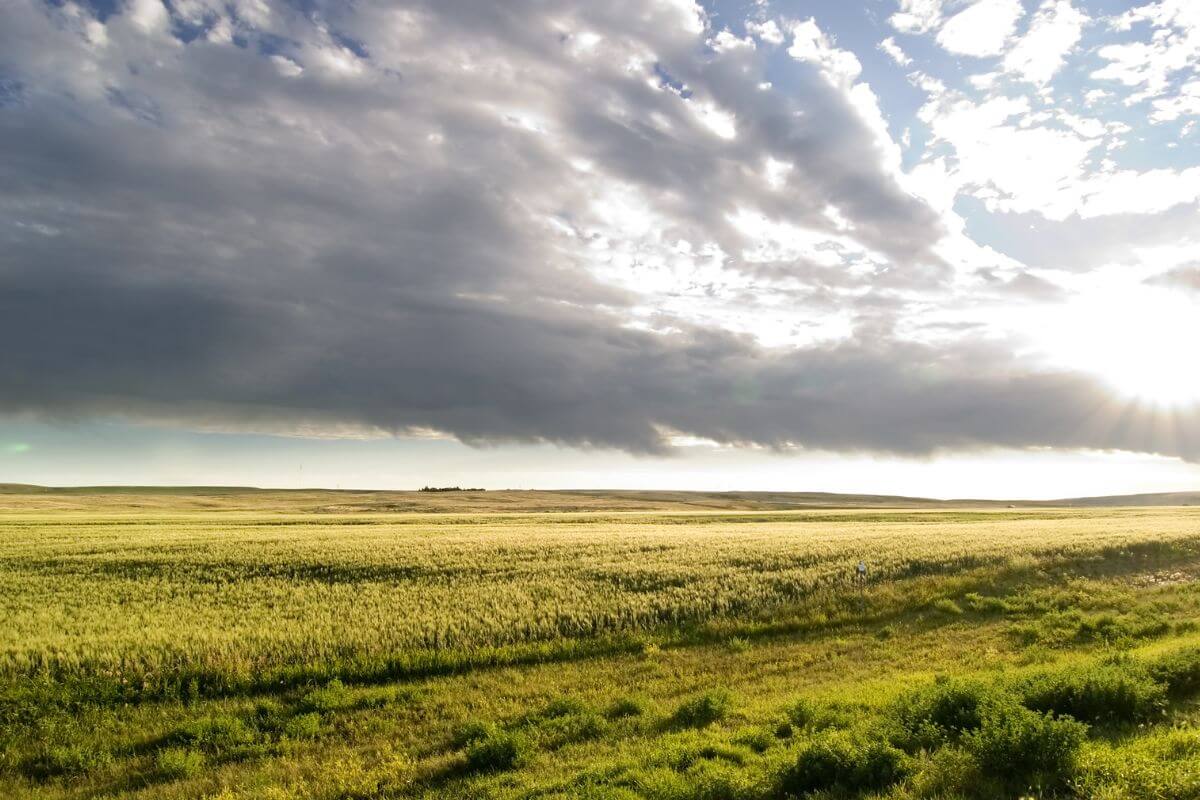
The life of a Montana farmer, waking up to the sun breaking over the horizon, the smell of freshly turned soil, and that good old whisper of freedom. But is it hard to get started? It’s as hard as you make it.
In Montana, your farming game needs to sync up with the climate and growing season. We’re talking USDA plant hardiness zones 3-6.
This means you’ll find it easy to grow crops like sweet corn, cabbage, and beans, among others. The climate here is as variable as a cowboy’s lasso tricks, with short, hot summers and long, cold winters.
Here’s a quick cheat sheet for your Montana farmland dreams:
- Climate Research – Understand the growing season and weather patterns.
- Land Choice – Research zoning laws to ensure you can farm on your chosen plot.
- Real Estate Agent – Opt for someone with farmland expertise.
If you’re committed to riding this Montana farming wave, there are steps to pave your path. First, research zoning laws in your preferred area; nobody wants a “Hey, you can’t farm here!” surprise.
Next, scout for a reputable real estate agent experienced in farmland acquisition. The right agent is your golden ticket in this rodeo.
How to Buy Land in Montana
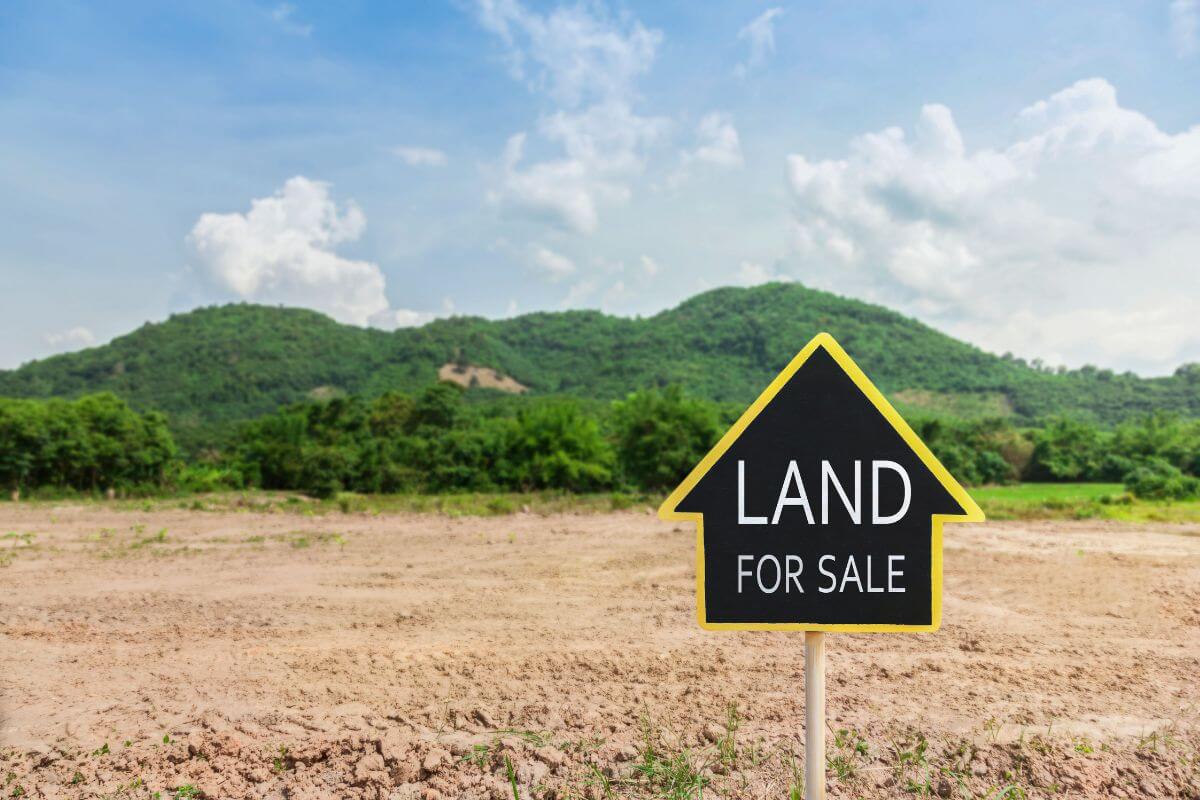
With Montana’s stunning landscapes and endless opportunities for homesteading, it is the perfect place to start your own homestead.
But before you can start building your dream home and living off the land, you’ll need to know how to buy real estate. This section will help you navigate the exciting process of purchasing land in Montana.
Average Prices for Land per Acre in Montana

When it comes to starting your homesteading journey in Montana, one of the most important factors to consider is the price of land.
Montana offers a wide range of options for aspiring homesteaders, with varying prices depending on several factors.
According to acretrader.com, the average price for farm real estate in Montana was $2,066 per acre in 2018.
This represents a significant increase compared to the early 2000s, where the average price per acre was just $887 (based on an average of all sales over 640 acres).
Over the last 20 years, the price of farmland per acre has risen by an average of 4.6% yearly. In 2019, the price per acre came down to $1,030, still reflecting an increase of $549 per acre over the last 2 decades.
Finding Farmland for Sale in Montana
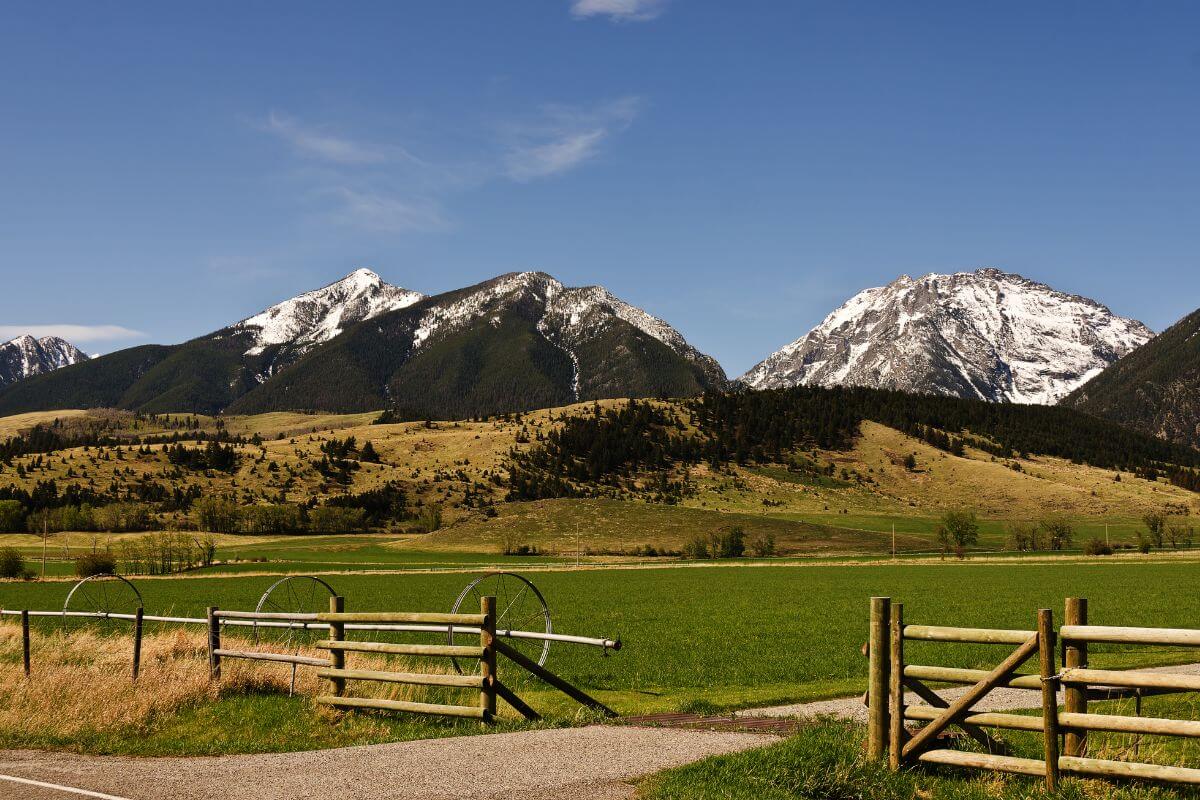
When it comes to finding farmland for sale in Montana, there are several avenues you can explore to find the perfect property.
These websites provide detailed listings and often include photos and descriptions of the Montana land:
- Montana Land Source – This comprehensive online platform offers listings tailored to your criteria. Whether you’re scouting by county, price, or acreage, Montana Land Source has you covered.
- LandWatch – Another excellent online resource, LandWatch will notify you when properties that meet your specifications become available.
- Local Real Estate Agents – Consult a real estate agent who specializes in farmland. They can give you the lowdown on local market trends, which is invaluable.
After your online research, visit the county courthouse. There, you can explore public land sales or leasing opportunities.
Don’t hesitate to check the county clerk, treasurer, and recorder offices for county land records, tax records, and assessment records to guide you.
If you’re eager to dive in, reach out to groups like the Montana Farm Bureau or MSU Extension for insights on land prices, community dynamics, and resources for new farmers.
Buy Land in Montana With These Tips
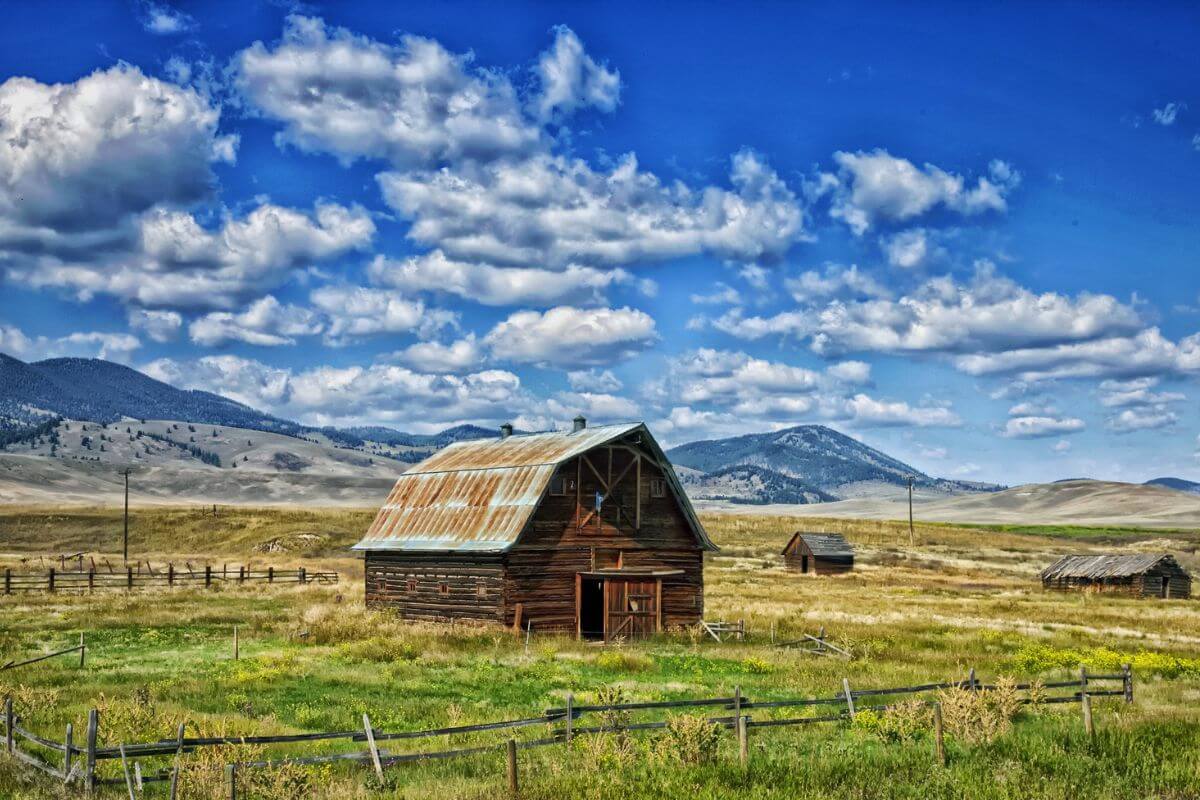
Real estate is a significant investment, so you should take these steps to ensure your purchase aligns with your goals.
When buying land in Montana, consider these practical tips to make a good decision:
- Legal Guidance – Work with a reputable real estate attorney who is familiar with Montana’s laws and regulations regarding land purchases.
- Boundary Clarity – Conduct a thorough land survey to ensure you are aware of the property’s boundaries and any potential issues.
- Year-Round Access – Consider the accessibility of the land, particularly during winter months, to ensure you can reach the property year-round.
- Zoning Wisdom – Research zoning and land use regulations in the area to make sure your plans for homesteading are allowed.
- Proximity to Necessities – Take into account the land’s proximity to essential services such as schools, hospitals, and grocery stores, as well as its suitability for your homesteading goals.
Montana Homestead Grants

Let’s explore the Homestead Grants available in Montana, including the Beginning Farm and Ranch Loan Program, the Rural Assistance Loan Program, and the Growth Through Agriculture Program.
Montana homestead grant initiatives offer support for newcomers and those with modest financial investments in agriculture, fostering economic growth and diversification in the agricultural sector.
These grant programs aim to create opportunities for sustainable farming, foster rural development, and ensure the long-term prosperity of Montana’s agricultural communities.
The table below provides information about some homestead grant programs available in Montana:
| Program | Purpose | Maximum Amount | Eligibility Criteria | Additional Information |
| Beginning Farm and Ranch Loan Program | Support novice farmers and ranchers | Up to $558,000 | At least 18 years old First-time producer (no prior ownership interest) Net worth not exceeding $450,000 Montana residency required Sufficient training and experience | Offers lower interest rates Financial institution handles credit evaluations and collateral No minimum loan requirement Collaborative loan terms |
| Rural Assistance Loan Program | Aid small-scale producers | Up to $75,000 | At least 18 years old Montana residency Net worth not exceeding $450,000 | Loans for agricultural property, improvements, operating expenses, and agricultural land |
| Growth Through Agriculture Program | Strengthen Montana’s agricultural sector | Up to $150,000 (Grant up to $50,000, Loan up to $100,000) | Projects adding value to Montana’s agricultural products Prospects for commercial success and job creation Limit of 2 GTA grants within 2 years | Grants are non-repayable Loans with repayment over up to 8 years, and variable interest rates Research emphasis encouraged |
What You Need to Know About Montana Zoning Laws

Zoning laws are legal regulations and land-use planning tools established by local governments (cities, municipalities, or counties) to control the use and development of properties within their jurisdiction.
Navigating Montana’s zoning laws is like a journey through its diverse landscapes – there are ups and downs. Zoning laws differ from one county to another, so it’s crucial to research local rules.
For instance, in Stillwater County, zoning laws are minimal, almost like finding a rattlesnake in winter.
However, in Bear Canyon, things are more relaxed. There, residents can keep animals and grow food on their land, no matter their size.
If you’re thinking about starting a homestead in Montana, your zoning checklist should include:
- Local Laws – Always start by consulting your local county regulations. Some counties may require permits for specific areas of your homestead, such as barns or additional dwelling units.
- Animal Allowance – Make sure to check if livestock is allowed on the property. Some counties have restrictions based on land size.
- Desert Claim Filings – Particularly in Montana, some rural areas might still operate under old desert claim filings, adding another layer to the complexity.
- Farm-Friendly Zones – Some counties, like Bear Canyon, have ‘agricultural zoning’ that’s more open to farming and livestock.
Understanding zoning laws is essential to avoid future hassles. John Anderson, a seasoned Montana rancher and homesteading pro, advises a rule: “Before you settle down, check if you can plant roots.”
So, don’t be put off by the legal jargon; see it as your crucial first move toward realizing your Montana dreams.
What to Know About Utilities in Montana
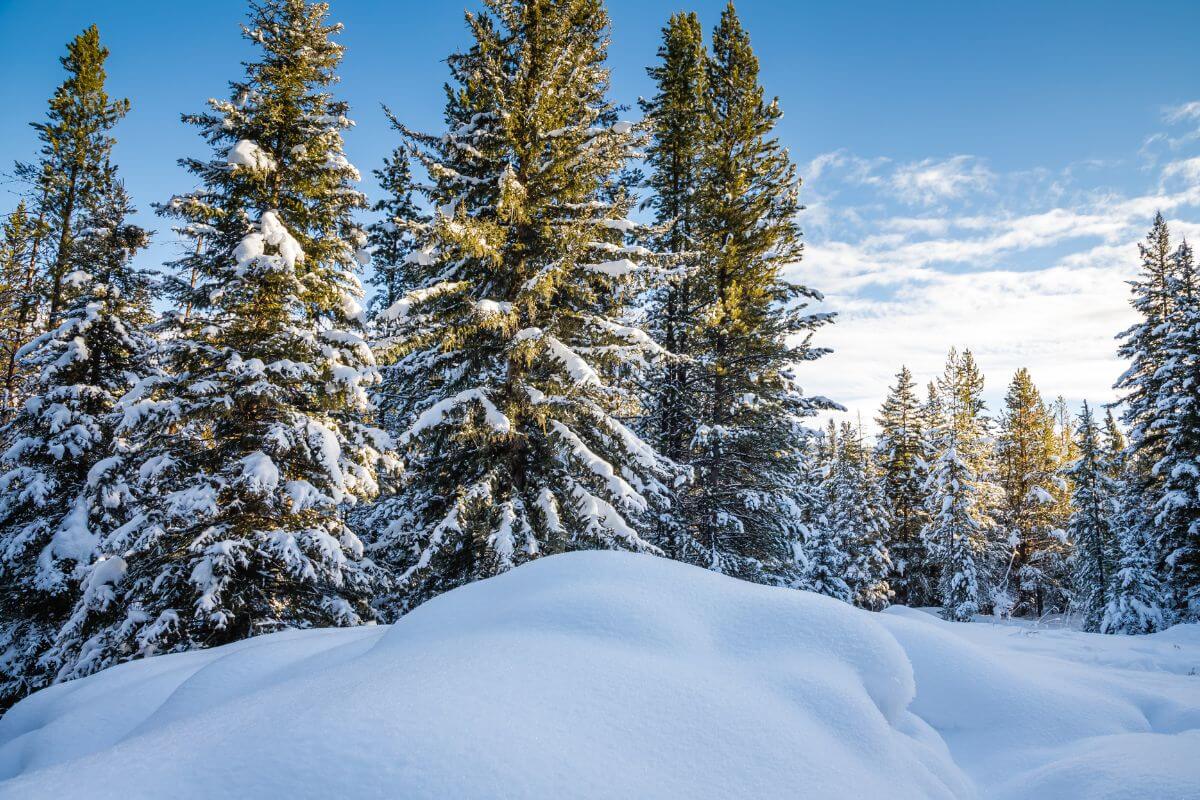
Dreaming of an off-the-grid Montana life? You’re in good company. The idea of self-reliance amid stunning plains and snowy peaks is undeniably appealing.
However, before you fully embrace the dream, let’s discuss utilities. Believe me, you don’t want to learn the harsh truth about Montana winters the tough way.
Here’s what to think about living off-grid:
- Harsh Winters – Montana’s winter months can be grueling, and often, traditional grid power may not be accessible. Have a plan in place for heating and staying warm.
- Renewable Energy Sources – Montana is rich in renewable resources. Whether it’s solar, wind, or hydropower, chances are you can harness one (or more) of these to keep your homestead running.
- Consult Local Experts – Consult with local experts to identify the best systems for your needs. Montana State University Extension, for instance, has great resources for rural living.
- Backup Power – Invest in generators. Even if you’ve got your renewable energy game on point, backup power is a Montana homesteader’s best friend for emergencies.
When you’re crafting your dream homestead, think of your utilities like layers on a chilly Montana morning.
Start with a renewable energy source like solar panels as your mainstay, but keep propane or generators in your back pocket as a backup.
Montana Homesteading Final Thoughts

Homesteading in Montana offers a multitude of benefits along with its fair share of challenges.
Throughout this guide, we have explored various aspects of starting a homestead, including growing crops, raising animals, buying land, and navigating zoning regulations.
Montana’s extensive land offers ample room for a self-sufficient lifestyle, supported by its fertile soil and agricultural heritage, perfect for crop cultivation and livestock raising.
With proper planning and research, homesteaders can tap into the abundance of resources and establish thriving self-sustaining communities.
However, it is important to acknowledge the challenges that come with homesteading. The unpredictable weather patterns and harsh winters can test the resilience of even the most seasoned homesteaders.
Additionally, obtaining land and navigating county agencies and regulations can be time-consuming and complex.
To assist homesteaders, Montana offers various homestead grants and programs aimed at supporting aspiring landowners.
Montana’s grant programs like the Growth Through Agriculture Program, offer crucial financial support for homesteaders to access land and start agricultural ventures.
Homesteading in Montana offers a unique opportunity for individuals and families seeking a sustainable and self-sufficient lifestyle.
While the road to homesteading in Montana may have its challenges, the rewards of a self-sufficient and sustainable lifestyle in this beautiful state are well worth the effort.
Montana Homesteading FAQs
1. Can You Still Homestead in Montana?
Yes, homesteading is legal in Montana due to the Homestead Act of 1862, which provided a legal framework for Americans to claim and establish land as their primary residence.
While the original act has seen updates and supplementary laws over the years, Montana remains a welcoming state for homesteaders who wish to build their self-sufficient lifestyle.
2. How Much Land Can You Homestead in Montana?
Under the Montana Homestead Declaration, you can protect up to $378,560. This equity includes the land you homestead and any improvements you make, such as building a house, barn, or other structures.
The Homestead Declaration serves as a legal means to safeguard your property and investments in Montana.
3. Does Montana Have a Property Tax Exemption?
Yes, homeowners in Montana can take advantage of the state’s property tax exemption policies.
According to Montana law, as long as the property in question is their primary residence, homeowners are able to protect up to $378,560 in equity with a Homestead Declaration.
4. How Do I Declare a Homestead in Montana?
To declare a homestead in Montana, you can take advantage of the Montana Homestead Declaration form available online for free.
Filling out and submitting this form is a necessary step to legally establish your property as a homestead and protect it under the state’s homestead laws.
5. Can You Claim Land in Montana?
Claiming land in Montana involves using it as your primary residence and filing for protection under the Montana Homestead Declaration.
This is not a traditional “claim” where you acquire land for free; instead, it’s a legal process to secure your property rights and protect your investment in your chosen piece of land.
Montana’s homesteading laws are designed to encourage long-term residency and investment in the state’s communities.
If you want to learn more about Montana, keep your mind engaged with these articles:

